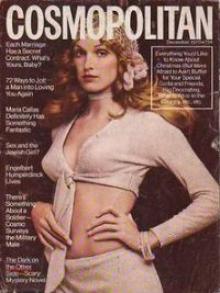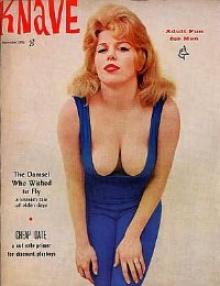- Home
- Harlan Ellison
Memos From Purgatory
Memos From Purgatory Read online
Memos From Purgatory
Harlan Ellison
CONTENTS
INTRODUCTION: MEMO ‘83
INTRODUCTION: MEMO ‘75
INTRODUCTION: MEMO ‘69
PROLOGUE
ONE
TWO
THREE
FOUR
FIVE
SIX
SEVEN
EIGHT
NINE
TRANSITION
BOOK TWO: THE TOMBS
TEN
ELEVEN
TWELVE
THIRTEEN
FOURTEEN
FIFTEEN
SIXTEEN
CONCLUSION
INTRODUCTION
MEMO ‘83
Eight years have elapsed since the last time I wrote an update to this book. In 1954 when the events chronicled in Book One: The Gang occurred, I was just about twenty years old. In 1960, the experiences I chronicled as Book Two: The Tombs happened to an Ellison who was twenty-six, had been married and divorced, had been in the Army, and was well into the beginning of his writing career.
In 1969, when the first updated introduction was written, I was already thirty-five, had been through two more marriages and divorces (on the theory that I’d keep trying till I got it right), had moved to Los Angeles, was writing books, movies and television, and was a world removed from the punk who’d joined the Barons fifteen years earlier. By 1975, when this book was published for the third time—demonstrating a viability I could never have guessed when I sat in that basement in Evanston, Illinois in 1961 writing it—I was a forty-one-year-old man who still had one more marriage and divorce laying in wait for him, had already published a substantial body of work, and had begun to realize that I might live to a nasty old age.
It is now spring of 1983 and MEMOS FROM PURGATORY blooms once again, like the lemon and tangerine trees in my backyard here in the City of Angels. By the time Ace Books publishes this new edition, I will be forty-nine. Next year it’s a half a century. Jeezus!
There were days in 1954 in Brooklyn, when I was more than damned dead certain I would not live to reach age twenty-one. (Similar days had occurred when I was age fourteen, but then I suppose we all shared that go-to-hell cynicism.) But Fate and Gravity had not yet punched my ticket, and as I sit here ruminating on the tenacity with which this meager chronicle has clung to life, I am warmed not only by the sweet breezes blowing across the San Fernando Valley, but by the better than 50/50 chance that MEMOS said something right in 1961 that may provide a shot at Posterity. When you’re in sight of fifty; and acne cases who think The Beatles were maybe an ancient cadre who marched in the Children’s Crusade occasionally try to piss you off by calling you an old fart; and you know if you were to go down to East L.A. to try and ferret out the current status of gang life that would update the reminiscences in this book, that you’d be too slow to get out of the way of something sharp and shiny; knowing that you wrote something two and a half lifetimes earlier that still has some music in it makes the springtime seem well worth waiting for.
Hoping you’re the same…
HARLAN ELLISON
9 APRIL 83
LOS ANGELES
INTRODUCTION
MEMO ‘75
What goes around…comes around.
What happens in this book happened to me in 1954 and 1960. The world was a certain way then. Let’s call it Situation A. By the time this book was published the first time, the 1954 portion of Situation A was fast fading, almost gone. The 1960 portion still obtained; the book was done in 1961. By the time the second edition was released through a tiny West Coast publisher in a very limited edition in 1969, Situation A was long-gone and, in the introduction to that second edition (which follows this new preface), the world had become another kind of place. Situation B.
It is now six years later. 1975. My observations about street gangs in 1969 no longer hold. Not even remotely. In fact, I was dead-ass wrong. Or, as Santayana put it, “Those who cannot remember the past are condemned to repeat it.” Situation B, as described in Memo ‘69, never reached fruition. It was all wishful thinking on my part. I won’t go any further on that line: read Memo ‘69 and you’ll see the pathetic wish-fulfillment of my statements just six years ago. (Current, cynical observations can be found in my collection APPROACHING OBLIVION.)
But the point that needs to be made here, especially here, is that we didn’t go into a Situation C, for Gods sake, we wound up back at square one, in Situation A.
Not only didn’t I learn from the past, I didn’t even see it come barreling back at me from the opposite direction. But this time, I think, I hope—I’d damned well better had—I got that truck’s number when it hit me.
There’s no need to write an extensive new description of street gangs in the 1970’s, of violence and death, kids invading schoolyards and even schoolrooms to shoot down members of rival clubs…because it’s all in the book as it happened in 1954.
What goes around…has come around.
In Chicago the black gangs Back O’ The Yards are locked in constant, deadly combat. In Manhattan’s Chinatown and out in San Francisco, the Oriental clubs restage the Tong Wars. In East L.A. the Chicano gangs are so tough not even the hardiest newspaper reporters can get in to report the machinations of warfare. In South Boston…well, to hell with the white assholes of South Boston.
MEMOS FROM PURGATORY has suddenly, sadly, become relevant again.
You can’t believe how sad that makes me.
As for the second part of this book, about jail, well, things ain’t much different now than they were then. Yeah, they’re closing down Manhattan’s Tombs, but they’ve still got to stick people away somewhere, and, we’ve got the bitter aftertaste of Attica to heighten our appetite for the slam. And in state and federal joints all across this nation the white and hispanic and black gangs proliferate; and if you don’t join, you walk a tightrope over doom.
I don’t know where else to go with this introduction. It all seems so damnably inevitable, so helpless-making. I should have seen it, and I didn’t, and I feel like a jerk. Leo Dillon, who did the cover for the first edition—a portrait of me behind bars—and who did the cover for this new edition, said just the other night that I keep fooling myself, that I keep murmuring spero meliora, I hope for better things, but that in my gut, in the outer layers of my skin, in my non-sentimental sections of brain, I know it’s all the same, always the same, always going to be the same. Maybe Leo’s right; I don’t know.
All I know is that in 1963 when Hitchcock did MEMOS as the first of his hour-long tv shows, he had James Caan (in his first major Hollywood role) playing Harlan Ellison, and I wasn’t hip enough to know that some day he’d be a star, having climbed to fame and glory in the role of Sonny Corleone in The Godfather. And if I couldn’t even see that one day they’d be totemizing the slug creatures of the Mafia as charming, home-loving businessmen who only kill occasionally to protect the family business, then how the hell could I be expected to understand that the conditions of life and the pressures of desperation that made the kids and the jails what they were in the first place would come full-circle—because they’ve never been gone—to send the kids out in the streets, again?
Listen: it’s twenty-one years since I went out into the swamp to get the background that resulted in this book and three others. It’s fourteen years since the book you hold came out the first time. And six since the second edition with its starry-eyed preface filled with bullshit and wish-fulfillment. Maybe in another five years, if this book has a continued life…and at this point it looks like nothing can kill it…short of universal brother/sisterhood, which I think is highly unlikely…I’ll be back at this typewriter, saying something diffe
rent.
Maybe I’ll be smiling and reporting back that we’ve reached Situation C at last. Maybe we’ll be back at B. And probably we’ll still be mired down at Situation A.
Maybe not. But I doubt it.
Santayana was right, I now believe. What goes around…comes around.
Hey, why don’t you all make a liar out of me again. Be nice to each other and watch the Ellison look like a shmuck. If that isn’t impetus enough, then think about some kid, lying face-down in an empty parking lot with his head blown open by a $35 piece he bought off the street; and while that one’s still burning, think about the kid who pulled the trigger, growing old and maggoty in some jail cell.
That’s right, Billy Graham, it’s a terrific world. Where do I go for a refund on my ticket?
HARLAN ELLISON
11 DECEMBER 74
NEW YORK CITY
INTRODUCTION
MEMO ‘69
Eight years ago, the book you are about to read was first published. It was released by a very small paperback house in Evanston, Illinois, with a print order of just over a hundred thousand copies. It sold for fifty cents a copy. About six months ago, I received—as a matter of course—a catalogue of rare and out-of-print volumes from an antiquarian bookshop in San Francisco. This book, in its original incarnation, was listed at fifteen dollars, with the amended notation that it was in VG condition.
When MEMOS FROM PURGATORY was published, the events of the first section—the time I spent with the gangs in Brooklyn—were already seven years past, though the events of the second section—jail time in Manhattan—were only a year gone. It all started in 1954, it saw print in 1961, and now it is 1969. Fifteen years later, and yet another edition of that book is being published. For in autobiography dealing with a subject as specialized as kid gangs and incarceration, it is extremely peculiar that a decade and a half could pass, and the book will compel interest. History’s memory is notoriously short.
Yet here is the strangest part of it all:
In fifteen years of scrounging through used paperback stores, I have never ever, even once, in Detroit, Cleveland, Chicago, New York, Miami, Kansas City or Los Angeles…ever seen a copy of this book among the cast-off remnants of a nation’s spare time reading matter.
The original publisher, now defunct, assured me, some five years ago, when I wrote asking for a dozen copies, that he had none available. The warehouse to which returned copies had been sent had depleted its supply long since. So, though there were undoubtedly returns, even they had been sold, either to dealers who had had reorders, or to collectors who may have sensed there was something worth saving in the book…or, more probably, to casual readers who had heard about the book in the literary underground. It would have had to have been word-of-mouth, for as far as I know, MEMOS FROM PURGATORY (unlike the companion volume of short stories, GENTLEMAN JUNKIE & OTHER STORIES OF THE HUNG-UP GENERATION, issued by the same publisher at the same time, and now even more of a rare book than MEMOS) was never reviewed by a major publication or newspaper.
But apparently the word has passed. I heard some of the word myself. A few letters, one every year or so, from guys who had been in the slammer, telling me they dug the book, that it captured many of the thoughts and experiences they had themselves had. A passing phrase from another writer, at a workshop, casually mentioning “that jail book” I’d written. But nothing major, nothing really sensational, no brushfire of enthusiasm such as the kind that picked up Pollini’s work, or James Drought’s, or even Tolkien’s books. Just a steady coterie of fans who saved their copies, thus making copies in VG condition worth fifteen bucks. With the exception of GENTLEMAN JUNKIE, none of my other books—books that sold far better, and had far greater circulation—commanded that kind of perennial interest. And about five years ago, I started getting letters from readers who wanted to know if I had copies I’d mind selling.
Now, it is 1969, fifteen years after the days I walked the garbage-scented streets of Bedford-Stuyvesant. Fifteen years after I lived in a rented room so small the mice were hunchbacked. Fifteen years since I worked with a 12-inch Italian stiletto and fifteen years since I wrote my first novel, based on the experiences in this autobiography.
There are some updatings to be done, of course, which is what impels this new introduction.
The situation in the streets has changed drastically. For the most part, the juvie gangs are gone. Well, not really gone, because the reasons for their existence still exist—the poverty, the alienation, the helplessness, the hopelessness of their lives, their need to belong to something meaningful. But they’ve changed. The black gangs have now become militant civil rights groups, à la the Blackstone Rangers in Chicago. The organizational talents of many of the gang leaders and their war councillors has been channeled into student dissent on college campuses. And, I’m sorry if you’re a right-winger and find what I’m about to say odious, it’s a beautiful thing. Those kids never had anything of their own…except the gangs. They lacked pride in self, pride in race, pride in nation. So they banded together in the streets, to form artificial clans, little communities built on violence. But the new dawning of passion among the young in this country, in this time of intellectual and emotional upheaval, has given them something concrete and lovely to which they can belong.
They are suddenly concerned for their lives, these damned and forgotten children of the streets. They are—miracle!—concerned for their world. They see what a hideous, fucked-up garbage dump their elders have made of this nice green ball of sod whirling through the universe, and they may not know they are in the best traditions of Thoreau and the American Revolution, but they have ceased their internecine warfare and have turned all that hostility and guerrilla expertise against the Establishment.
Well, I say great.
Instead of being a force for destruction in our big cities, the kids have now become a core of fighters to liberate the black man, to hand back some of the responsibility of their futures to the young people who must live those lives, to bludgeon to death once and for all the outmoded and guilt-drenched moralities that have kept this nation so schizoid for so long. The job was foisted off on them—all they really wanted to do was hang around the stoops and get in a few hops from time to time. But even without truly understanding what a force for change and good they are, the very gangs of which I speak in this book, gangs that fifteen years ago were able to terrorize entire neighborhoods, these same gangs have become the front ranks of a youth movement that will certainly revolutionize and uplift not only this country, but the world.
That the rebel always looks like an outlaw when he first begins his march toward the light, is a reality even history cannot dim or forget. So though the gang kids may look like the ragtag tatter of an alien horde, they are, in fact, the one genuine hope for our times.
The changes in me during the past fifteen years cannot compare in terms of radicalism with the way in which these kids have changed themselves.
So this book is outdated. No doubt about it. But so are books about the French Revolution…so are books about Castro’s wresting Cuba from a dictator…so are books about Mexico’s struggle for freedom…
What was a book of instant immediacy, fifteen years ago, has become a chronicle of a period. In a sense, a lot of history. Yet I am still reminded of those letters from people who have said this book gave something special to them, in a special way, and speaks to the human condition in general, not just to juvenile delinquency or the prison system in particular.
And for that reason, for those seemingly permanent joys and truths herein contained, this book has retained its hold on life. Till now, another edition emerges.
Many of you may have seen a vastly changed and fictionalized version of this book on Alfred Hitchcock’s television series. It was purchased by the Hitchcock organization in 1962, and appeared over NBC in 1963. The title was the same, but it was hardly consistent with the truth of what really happened. I mention that show, and the subject o
f truth, because in the most important ways that is what this book is about.
And since I’m dealing here with truth, I must answer for the first time in print the question of those who’ve read this volume, who ask me, “Did everything in that book really happen?”
The answer is a simple yes. Precisely as reported. There is, however, one deviation from chronological and specific fact. In section two, “The Tombs,” chapter thirteen, I wrote that I met Pooch, one of the gang kids I’d known, while in jail. That is a lie. The boy whom I refer to as Pooch was a nameless kid whom I’d never met before we wound up in the same slammer. When I handed in the manuscript of this book to its original publisher, he had only one quarrel with the way it was written. He felt there might not be enough linkage between the two sections, and he asked if I could change the kid in the slammer to one of the kids from the gang, thereby tying the two sections together. After considerable thought, I agreed. They had been so much alike, merely to give that nameless kid a name (which was a dreamed-up name to begin with), seemed to me to be a harmless untruth. So I did it. No one ever seemed to notice, or find fault with the coincidence. But through the years that one untruth has rankled me.
Now that I’ve taken this space to set it straight, I can answer with clear conscience, “Yes, everything in this book was real, was true, happened just this way. And the truths that emerge from it are still true.”
Because truth never changes.
Not really.
The forces that warped and shaped the lives of which I speak in this book, still maintain. They are still at work. They still cripple lives, communities, an entire nation.

 Repent, Harlequin! Said the Ticktockman
Repent, Harlequin! Said the Ticktockman Broken Glass
Broken Glass Other Glass Teat
Other Glass Teat Memos From Purgatory
Memos From Purgatory I Have No Mouth and I Must Scream
I Have No Mouth and I Must Scream The Deadly Streets
The Deadly Streets The Glass Teat
The Glass Teat Paingod and Other Delusions
Paingod and Other Delusions No Doors No Windows
No Doors No Windows Strange Wine
Strange Wine Harlan Ellison's Watching
Harlan Ellison's Watching Over the Edge/An Edge in My Voice
Over the Edge/An Edge in My Voice Troublemakers: Stories by Harlan Ellison
Troublemakers: Stories by Harlan Ellison Gentleman Junkie and Other Stories of the Hung-Up Generation
Gentleman Junkie and Other Stories of the Hung-Up Generation The Kyben Stories
The Kyben Stories From the Land of Fear
From the Land of Fear The Top of the Volcano: The Award-Winning Stories of Harlan Ellison
The Top of the Volcano: The Award-Winning Stories of Harlan Ellison Sleepless Nights in the Procrustean Bed
Sleepless Nights in the Procrustean Bed Ellison Wonderland
Ellison Wonderland Children of the Streets
Children of the Streets Can & Can'tankerous
Can & Can'tankerous Love Ain't Nothing but Sex Misspelled
Love Ain't Nothing but Sex Misspelled Stalking the Nightmare
Stalking the Nightmare Approaching Oblivion
Approaching Oblivion Deathbird Stories
Deathbird Stories Partners in Wonder
Partners in Wonder Web of the City
Web of the City Spider Kiss
Spider Kiss A Boy and His Dog
A Boy and His Dog Shatterday
Shatterday Slippage: Previously Uncollected, Precariously Poised Stories
Slippage: Previously Uncollected, Precariously Poised Stories Repent, Harlequin! Said the Ticktockman
Repent, Harlequin! Said the Ticktockman Come to Me Not in Winter's White
Come to Me Not in Winter's White The Song the Zombie Sang
The Song the Zombie Sang The Other Glass Teat
The Other Glass Teat Doomsman - the Theif of Thoth
Doomsman - the Theif of Thoth The City on the Edge of Forever
The City on the Edge of Forever I See a Man Sitting on a Chair, and the Chair Is Biting His Leg
I See a Man Sitting on a Chair, and the Chair Is Biting His Leg The Harlan Ellison Hornbook
The Harlan Ellison Hornbook Pulling A Train
Pulling A Train The Glass Teat - essays of opinion on the subject of television
The Glass Teat - essays of opinion on the subject of television An Edge in My Voice
An Edge in My Voice Angry Candy
Angry Candy Troublemakers
Troublemakers The Top of the Volcano
The Top of the Volcano Over the Edge
Over the Edge Survivor #1
Survivor #1 Slippage
Slippage